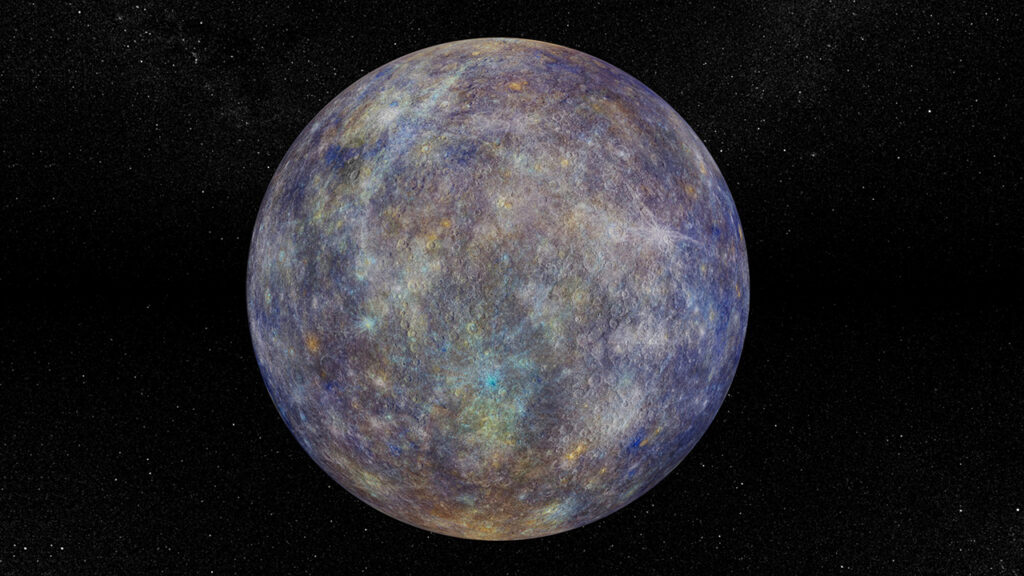Mercury is the first planet in the solar system closest to the Sun. It is a terrestrial planet mainly composed of rocks and metals, similar in material composition to Earth, but also has its own unique features.

It is the smallest planet in the solar system, with a diameter of approximately 4880 kilometers, which is about 38% of the diameter of Earth. The mass of Mercury is approximately 3.3011 × 10 ² ³ kilograms, accounting for about 5.5% of the mass of Earth. Due to its relatively small mass, its gravity is also relatively weak. The surface of Mercury is covered with numerous craters, similar to the surface of the Moon. These craters were formed over billions of years by the impact of meteorites and asteroids. There are also some huge cliffs and plains on its surface. Mercury’s atmosphere is very thin, mainly composed of trace amounts of hydrogen, helium, oxygen, sodium, calcium, and potassium.
Although Mercury has a small volume, its magnetic field is relatively strong, about 1% of the strength of Earth’s magnetic field. It is believed that this magnetic field is generated by the movement of liquid metal cores inside the planet.
Mercury orbits the Sun at a very fast speed, with a period of approximately 88 Earth days. It is the planet with the shortest orbital period in the solar system.
Due to Mercury’s proximity to the Sun and thin atmosphere, its surface temperature can reach extremely high and low values. During the day, the surface temperature can soar to about 430 degrees Celsius, hot enough to melt lead. At night, due to the lack of an atmosphere to retain heat, temperatures may plummet to minus 180 degrees Celsius or even lower.
Mercury is a planet full of mysterious colors and unique features. Its harsh environment and unique physical and orbital characteristics make it an important research object for astronomers to understand the formation and evolution of the solar system.
Leave a Reply